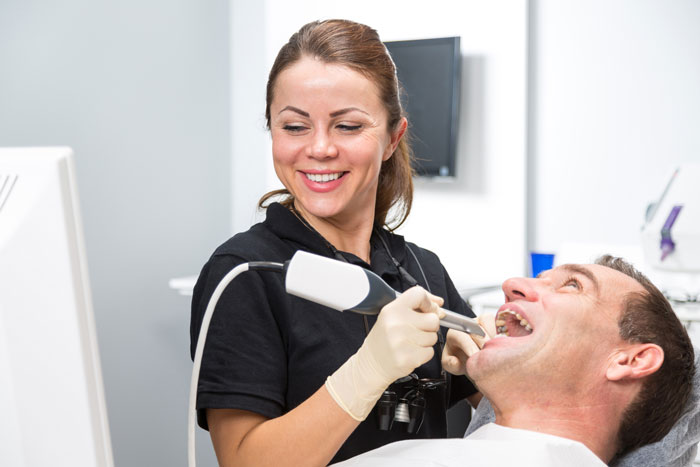How Intraoral Scanners Improve Your Orthodontic Treatment
 While intraoral scanners have been around for a while, many patients aren’t aware of the significant benefits they provide. In fact, most patients may not even know what an intraoral scanner is and what it does. We are happy to highlight the positive aspects that an intraoral scanner brings to our practice. If you have any questions about how your treatment may improve with an intraoral scanner, talk to your dental professional.
While intraoral scanners have been around for a while, many patients aren’t aware of the significant benefits they provide. In fact, most patients may not even know what an intraoral scanner is and what it does. We are happy to highlight the positive aspects that an intraoral scanner brings to our practice. If you have any questions about how your treatment may improve with an intraoral scanner, talk to your dental professional.
What Is an Intraoral Scanner?
An intraoral scanner is a scanning device that provides your orthodontist with detailed images of your teeth and gums. This is a massive improvement in the area of dental imaging. These wonderful new machines provide the orthodontist with an accurate depiction of your teeth and soft tissue to make the best treatment decisions for your particular problem.
Reducing Dental Appointments
When a patient needs braces, diagnostic models, a mouth guard, or other needs for impressions, an intraoral scanner is a fantastic choice. The scanner can create a 3-D rendering of the teeth that is so accurate that a lab can fabricate the piece directly from the scanned images. This process often saves a patient a few visits, as things can be done much more quickly with the images rather than physical impressions. Even if a patient has brackets on their teeth, an orthodontist can digitally remove them to create a fitting dental appliance.
Faster Treatment
Because digital impressions of teeth don’t have to be shipped to a lab for fabrication, the turn-around time for completion is much quicker. The average time for the manufacture of an orthodontic appliance from physical impressions is about two weeks or even longer. With an intraoral scanner, the digital images are sent to the lab on the same day, resulting in a shipping time often within a week. This is much more convenient for the patient and the orthodontist. Sending digital impressions also minimizes the risk of being lost or damaged in transit. It isn’t unheard of for physical impressions to get lost or damaged in the mail and need to be re-done. The intraoral scanner eliminates this risk.
A More Accurate Fit
When it comes to appliances like clear aligners, and mouth guards the fit is critical. When an appliance doesn’t fit correctly, a patient can suffer from jaw pain, tooth pain, gum soreness, sinus pain, and even headaches. When an intraoral scanner is used to create a 3-D image of the teeth and gums, an appliance that is created is a perfect fit. Traditional physical impressions can be altered slightly if a patient moves or shifts their teeth when they are taken. This creates room for error and opens them up to the risk of a less-than-perfect fit. This is one of the main reasons many orthodontists are turning to intraoral scanners rather than the old goopy gag-inducing physical impressions.
Patient Comfort
An intraoral scanner tends to be much more comfortable for the patient when compared to physical impressions. If a patient has tooth sensitivity, even the pressure from an impression can be tough. Intraoral scanners are faster and less invasive. The scan can also be done in parts if a patient is uncomfortable. The scanner attachments often come in different sizes, which allow patients to feel more at ease with the entire experience.
More Cost-Effective
With dental treatment becoming more and more expensive, and many patients not carrying dental insurance, the cost is a big issue. Intraoral scanners are not only more accurate but also more cost-effective. Physical impressions are often pricey, and if they don’t fit comfortably, they may need to be re-done. That can double, or in some cases, triple the cost compared to digital impressions. With intraoral scanners, you also may cut your visits by one or two, saving you money in your office visit or co-pay. Also, this means less time you would have to take off of work for dental treatment. Overall, it is a win-win for patient and orthodontist.
Speak to Your Orthodontist
Are you interested in intraoral scanning and how it can benefit you in your orthodontic treatment? Make sure to make an appointment with your orthodontist to discuss if they use an intraoral scanner. This is especially necessary if you are considering any dental appliance that would traditionally require impressions like Invisalign™ braces, and mouth guards. Satisfaction tends to be much higher with final products that were created with intraoral scanning devices, like the one we have in our office. Contact us to make an appointment today to discuss your options.





